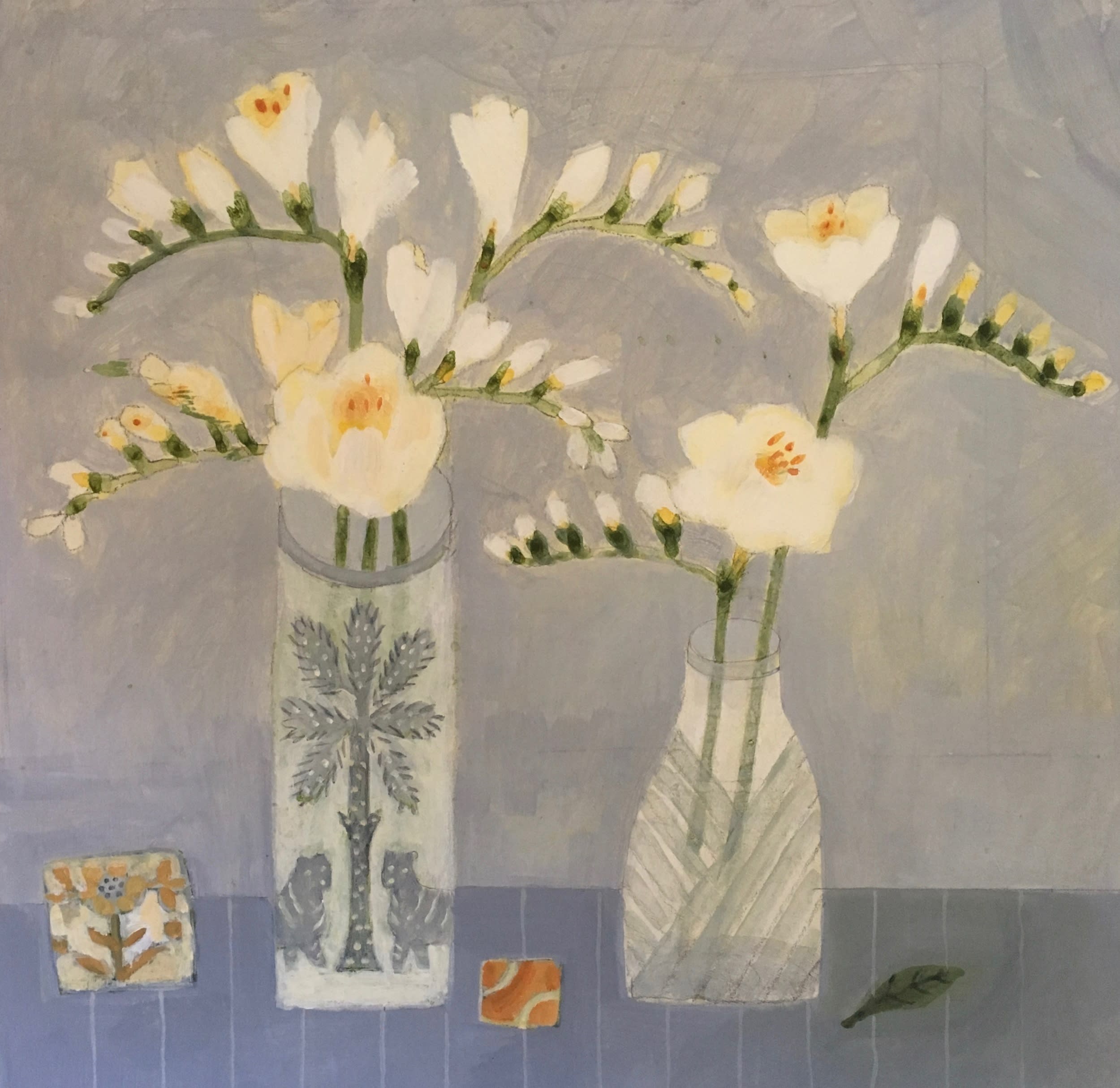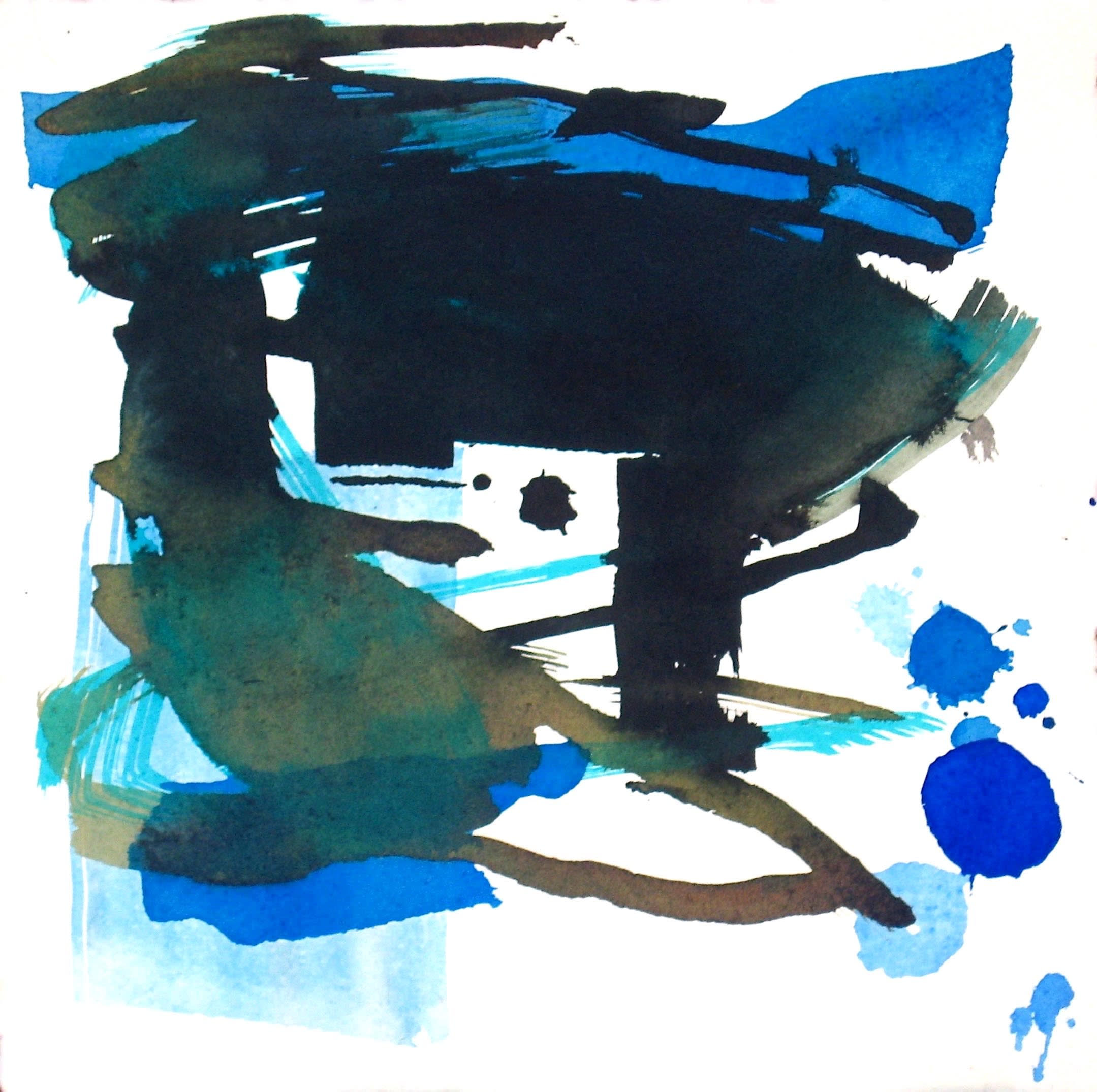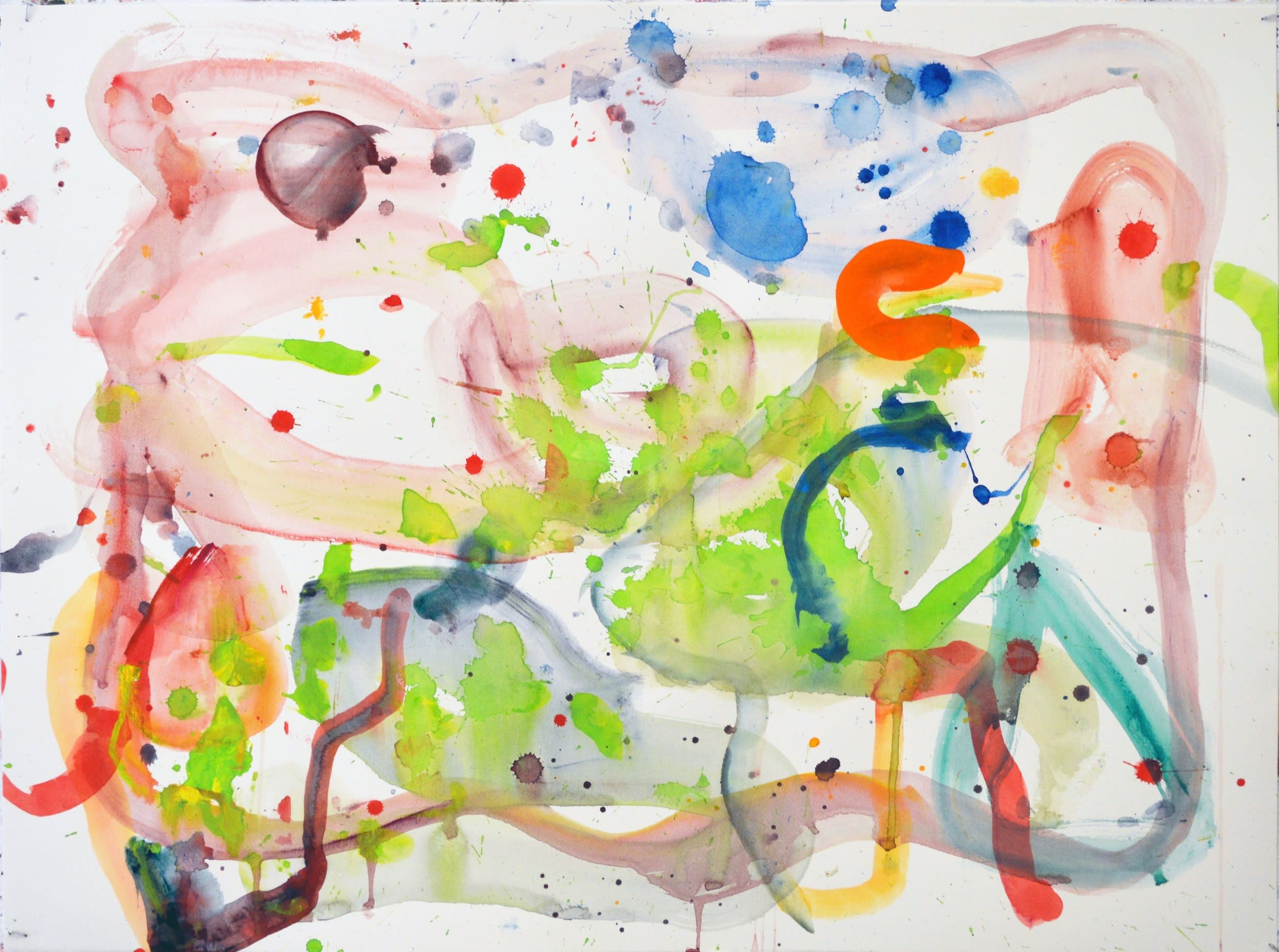Artists of the Royal Watercolour Society make work in any and all water-based media including, acrylic, ink, gouache, watercolour and mixed media pieces. Below is a little guide to some of these key water-based media, straight from the artists' mouths.
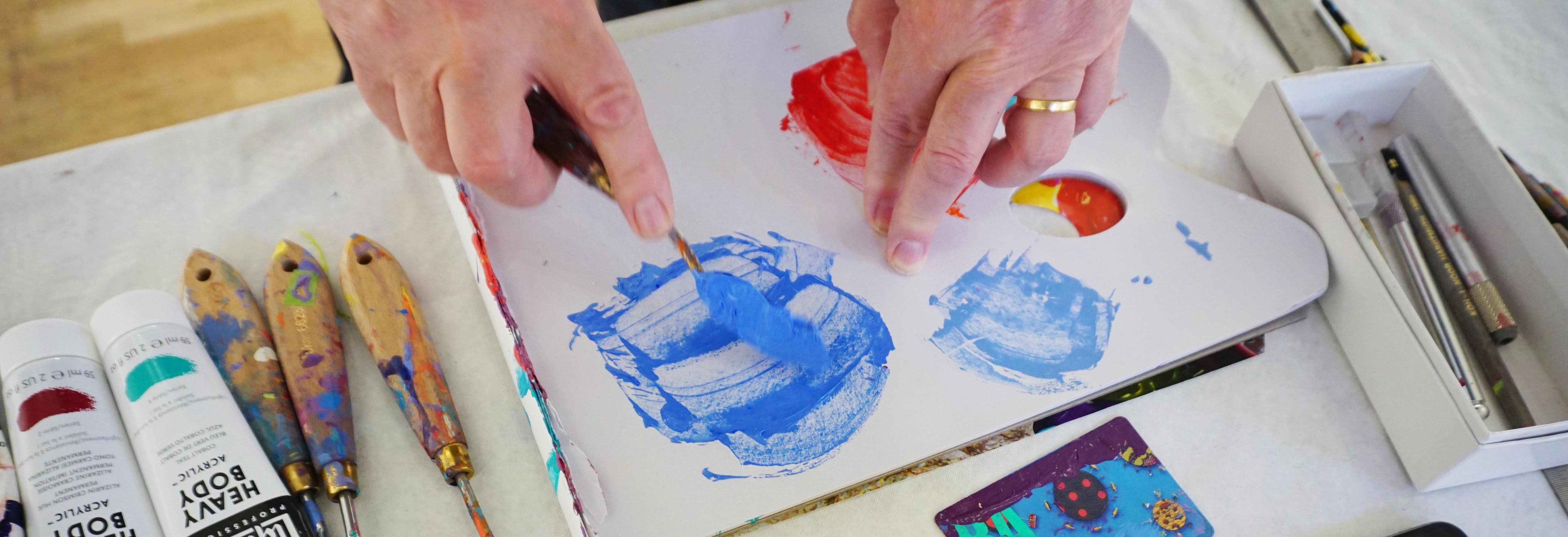
Acrylic
Acrylic paint is a fast-drying paint made of pigment suspended in acrylic polymer emulsion. Acrylic paints are water-soluble, but become water-resistant when dry. Depending on how the paint is diluted or modified (with gels or mediums), the finished painting can resemble an oil or watercolour painting, or can have it’s own characteristics not achievable with any other medium. Some examples of the use of acrylic in The Colour of Water can be seen in works by Iain Nicholls, Martin Leman, Denis Ryan and Gerry Baptist.
Jill Leman PRWS says of acrylic: Acrylic is incredibly versatile as a medium. I dilute it with a lot of water and find I can use it very much in a ‘watercoloury’ way - you can build layers with the advantage that the colours stay put.

Ink
Ink is a liquid or paste that contains pigments or dyes used for applying an image to a surface. The paste form of ink is commonly used for printmaking and is often oil-based. Artists in the RWS use ink in its water-based liquid form, usually on paper. It can be applied with a pen, brush, or quill. The term Indian ink (sometimes Chinese ink) refers to black ink which can create strong opaque areas of darkness. Some examples of the use of ink in The Colour of Water are works by Jane Lewis who uses ink as a stand-alone medium, and Sue Howells, Jim Hunter and Julia Midgley who use it combined with other materials.
Jane Lewis RWS says of ink: I work mostly with drawing inks and Indian ink which being in liquid form can cover large areas using big brushes if wanted. The colours are saturated yet translucent. I also like to use Indian ink which offers a dense, satisfying blackness. However all the inks can be diluted and mixed to give the subtlest and softest of hues so are very versatile.

Gouache
Gouache, sometimes referred to as bodycolour or opaque watercolour, is a painting media used by diluting with water, usually on paper. It is similar to watercolour in that it can be re-wetted and modified, however unlike watercolour, it dries to an opaque finish. Some examples of the use of gouache in The Colour of Water are works by June Berry, Julie D. Cooper, Chloe Fremantle, Wendy Jacob and Bridget Moore. Although all using the same medium, each artist has applied the paint to create contrasting results.
Wendy Jacob RWS says of gouache: I prefer painting in gouache to anything else as the colours are dense, vibrant and I can mix wonderfully subtle hues. Gouache is very easy to handle. You can overpaint, wash off and repaint on the paper to change a painting, allowing it to grow and mature on the easel in the same way as an oil painting. I feel in control of my painting with gouache and enjoy the impact that the solid colour can achieve.
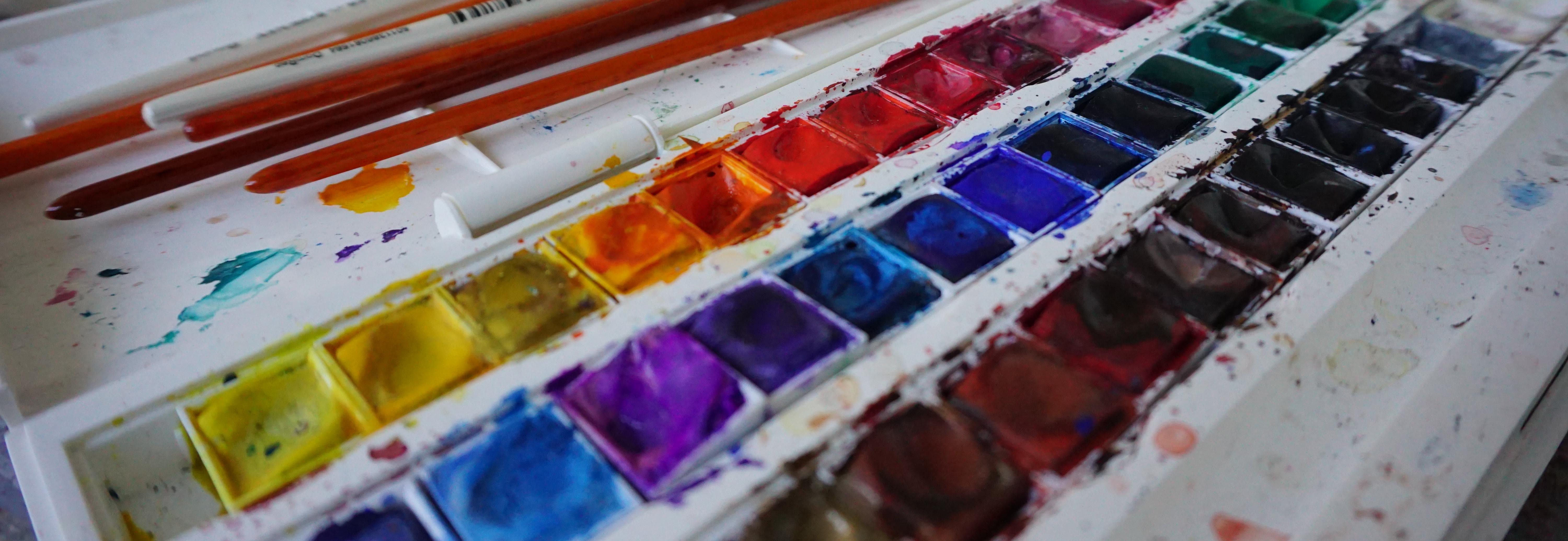
Watercolour
Watercolour is a painting media in which the paints are made of pigments suspended in a water-based solution. The traditional and most common support for watercolour paintings is paper, often made entirely or partially of cotton. Watercolours are usually translucent and appear luminous because the pigments are laid down in a pure form. Some examples of the use of watercolour in The Colour of Water are works by James Faure Walker, Fay Ballard, Annie Williams, Richard Pikesley and more.
James Faure Walker RWS says: I want my pictures to look fresh, luminous, caught in the moment, but also off guard and unexplained. I admire Turner’s ambition, the expertise, the freedom - also Cezanne and Sam Francis. They were not watercolour specialists, but I cannot imagine their paintings without the watery touch. I work with the paper on the wall, vertical, and also on the floor. Looking down helps me be detached.

Mixed Media
Mixed media is a term used when an artwork is made of more than one medium or material. Although the RWS is restricted to artworks made in water-based media on a paper-based support, that doesn’t stop our artists challenging the perimeters of this limitation. Our artists’ mixed media pieces sometimes include materials such as pastel, found paper, newspaper cuttings, printmaking techniques and even sand. Some examples of the use of mixed media in The Colour of Water can be seen in works by Stuart Robertson, Colin Merrin, Robin Richmond, Mark Raggett and more.
Stuart Robertson RWS says of mixed media: Mixed media can be useful in some aspects of my work. I use it in sketchbooks for speed and as a record of the places I have visited. I use tickets, stamps and wrappers I find on the floor. I recently returned from Kyoto where Japanese wrappers were so interesting in themselves. Sometimes you can work directly on the surface of the found paper. Tate Modern recently had an exhibition of Kurt Schwitters. A German Artist sent to the Isle of Man in the War. He had no real materials to paint with so therefore worked with found material. I discover working like this opens up a new way of approaching your work. It makes you less precious and therefore more experimental which can lead to exciting results.
More like this on the Blog...
Read: 8 Top Tips for aspiring & emerging artists
Read: Abstract Art in 2020: Online Panel Discussion
Learn: 5 things you may not know about the Royal Watercolour Society
Quiz: Which water-based media is for you?
Read / Watch: Abstract Art: In the Studio with Lisa Traxler
Watch: In the Studio with Bridget Moore.
Watch: In the Studio with Denis Ryan.
Watch: In the Studio with James Faure Walker.
